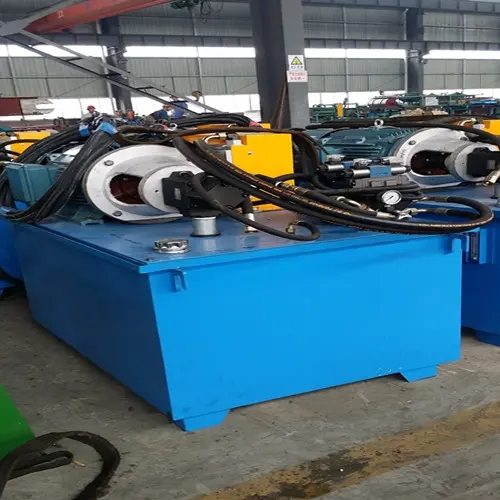
The Importance of Sheet Metal Forming Machines in Modern Manufacturing
Sheet metal forming machines play a pivotal role in the manufacturing industry, enabling the transformation of flat sheets of metal into a wide variety of shapes and structures. These machines are central to processes such as punching, bending, and shearing, which are essential for producing components used in numerous applications, from automotive to aerospace and construction.
One of the key advantages of sheet metal forming is its versatility. Manufacturers can create intricate designs and complex shapes that would be difficult or impossible to achieve with other methods. For instance, sheet metal forming allows for the production of lightweight yet strong components, making it ideal for industries where weight reduction is crucial, such as in automotive manufacturing where fuel efficiency is a priority.
The primary types of sheet metal forming machines include press brakes, laser cutting machines, and stamping presses. Press brakes are used to bend metal sheets into specific angles and shapes. This equipment can handle various thicknesses of metal and offers precision that is crucial for ensuring high-quality results. Moreover, advancements in technology have introduced numeric control systems that enhance accuracy and efficiency, minimizing the potential for errors.
Laser cutting machines represent another technological leap in sheet metal forming. Utilizing focused beams of light, these machines cut through metal sheets with exceptional precision. They offer flexibility in design, allowing for the creation of detailed patterns and shapes that traditional methods struggle to achieve. The speed and accuracy of laser cutting not only improve productivity but also reduce material waste, contributing to more sustainable manufacturing practices.

Stamping presses, on the other hand, are essential for mass production of components. They work by applying pressure to sheet metal to create a desired shape or form. This technique is especially effective for producing high volumes of identical parts, such as brackets, panels, and housings. The automation of stamping processes further enhances efficiency, allowing companies to meet high-demand production requirements while maintaining quality.
In addition to their mechanical capabilities, the advancement of digital technologies has revolutionized how sheet metal forming machines are operated. Computer-aided design (CAD) software enables engineers to create detailed blueprints for new components, which can be directly fed into forming machines. This not only streamlines the design-to-production process but also allows for rapid prototyping, enabling manufacturers to test and modify designs quickly.
Furthermore, the integration of Industry 4.0 concepts—such as automation, the Internet of Things (IoT), and data analytics—into sheet metal forming operations is transforming the landscape of manufacturing. Smart machines equipped with sensors can monitor performance, predict maintenance needs, and optimize production parameters in real time. This connectivity leads to reduced downtime and increased overall efficiency, fostering a more agile manufacturing environment.
Despite these advancements, challenges remain in the field of sheet metal forming. Factors such as fluctuating raw material costs, the need for skilled labor, and environmental regulations require manufacturers to adapt continually. Nevertheless, innovations in machine technology and manufacturing processes are helping to address these challenges.
In conclusion, sheet metal forming machines are indispensable in today's manufacturing ecosystem. Their ability to produce complex and precisely engineered components efficiently makes them a cornerstone of multiple industries. As technology continues to evolve, we can expect sheet metal forming to become even more integral to the future of manufacturing, driving quality, efficiency, and sustainability in production processes.